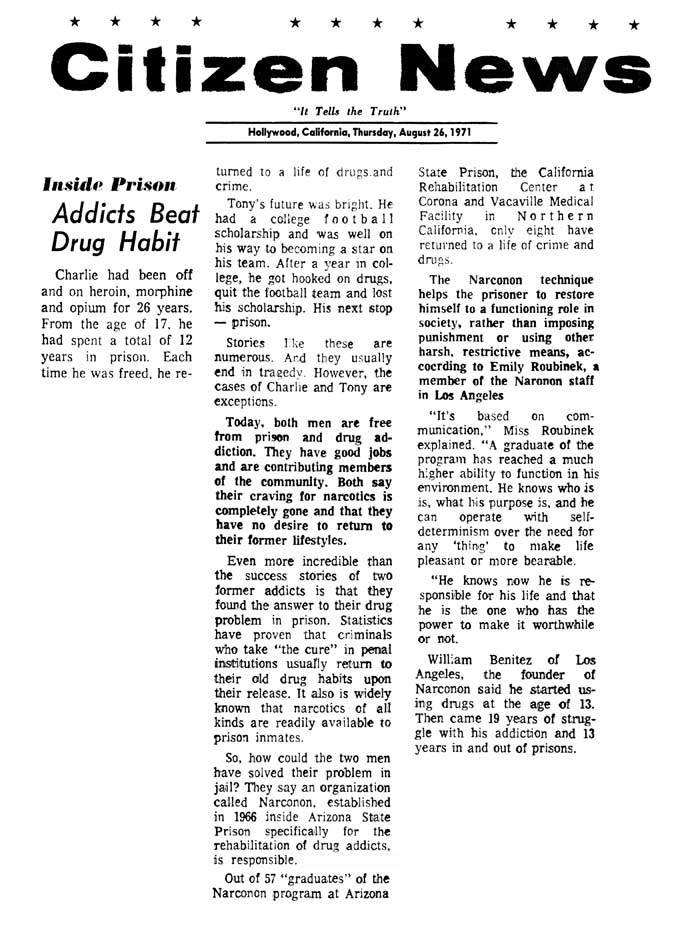Inside Prison Addicts Beat Drug Habit
Article in Citizen News, Hollywood, California, August 26, 1971:

Charlie had been off and on heroin, morphine and opium for 26 years. From the age of 17, he had spent a total of 12 years in prison. Each time he was freed, he returned to a life of drugs and crime.
Tony’s future was bright. He had a college football scholarship and was well on his way to becoming a star on his team. After a year in college, he got hooked on drugs, quit the football team and lost his scholarship. His next stop - prison.
Stories like these are numerous. And they usually end in tragedy. However, the cases of Charlie and Tony are exceptions.
Today, both men are free from prison and drug addiction. They have good jobs and are contributing members of the community. Both say their craving for narcotics is completely gone and that they have no desire to return to their former lifestyles.
Even more incredible than the success stories of two former addicts is that they found the answer to their drug problem in prison. Statistics have proven that criminals who take “the cure” in penal institutions usually return to their old drug habits upon their release. It also is widely known that narcotics of all kinds are readily available to prison inmates.
So, how could the two men have solved their problem in jail? They say an organization called Narconon, established in 1966 inside Arizona State Prison specifically for the rehabilitation of drug addicts, is responsible.
Out of 57 “graduates” of the Narconon program at Arizona State Prison, the California Rehabilitation Center at Corona and Vacaville Medical Facility in Northern California, only eight have returned to a life of crime and drugs.
The Narconon technique helps the prisoner to restore himself to a functioning role in society, rather than imposing punishment or using other harsh, restrictive means, according to Emily Roubinek, a member of the Narconon staff in Los Angeles.
“It’s based on communication,” Miss Roubinek explained. “A graduate of the program has reached a much higher ability to function in his environment. He knows who is is, what his purpose is, and he can operate with self-determinism over the need for anything,” to make life pleasant or more bearable.
“He knows now he is responsible for his life and that he is the one who has the power to make it worthwhile or not.”
William Benitez of Los Angeles, the Chairman of Narconon said he started using drugs at the age of 13. Then came 19 years of struggle with his addiction and 13 years in and out of prisons.
Related Article: